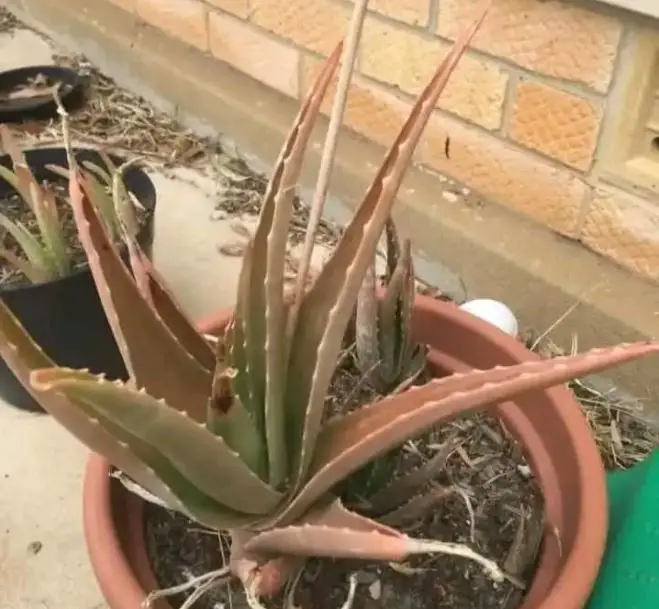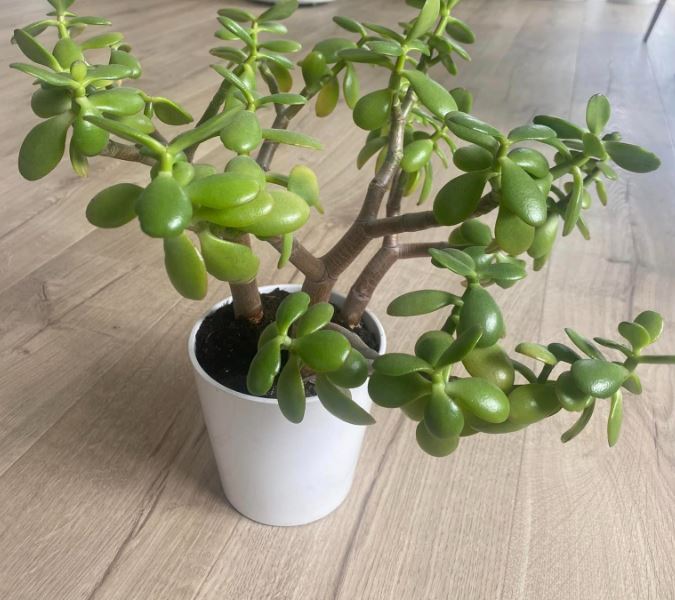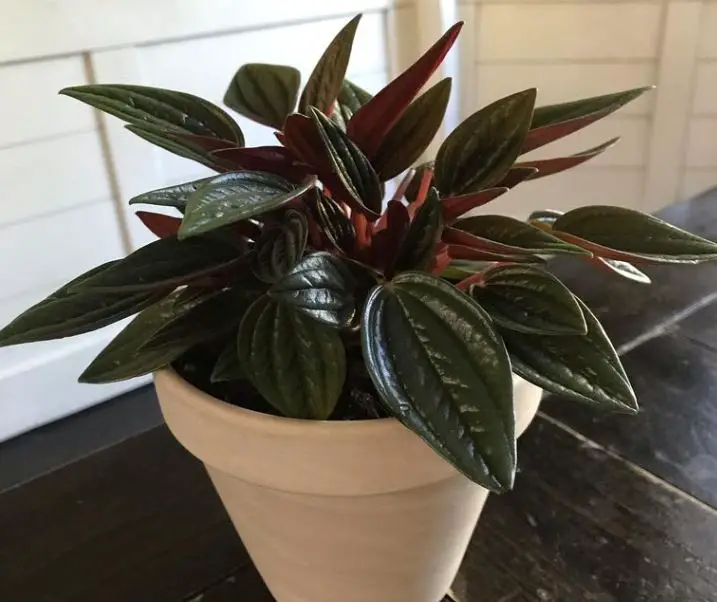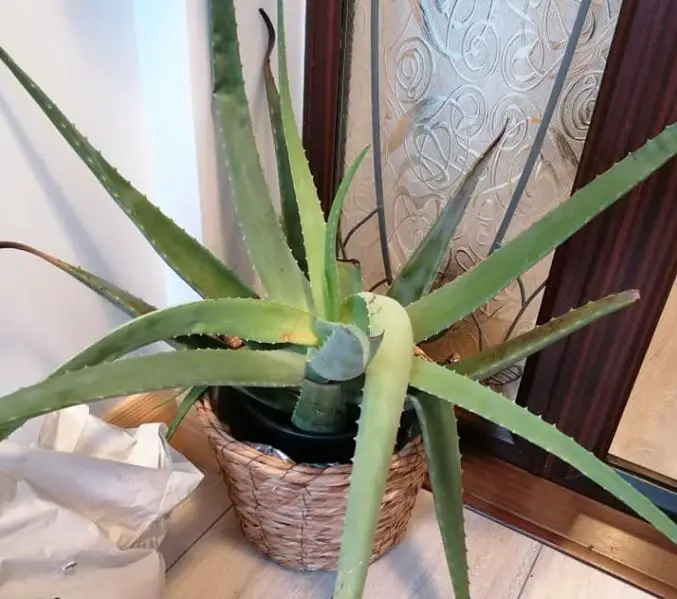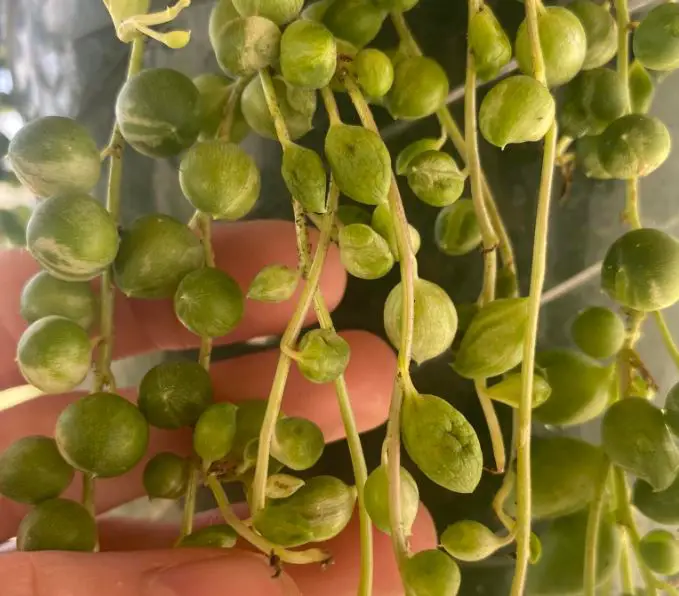Burro’s Tail Plant: Care and Propagation Guide
Burro’s tail (Sedum morganianum), also known as the donkey’s tail, is a unique plant with trailing pendulous stems that are covered in fleshy cylindrical blue-green leaves. This succulent is native to Honduras and eastern Mexico but it’s widely spread and grown as an ornamental plant in hanging baskets.
The donkey’s tail plant is easy to grow and care for both indoors and outdoors. It’s not cold hardy and should be protected from frosty conditions. This plant blooms in late summer producing red or pink flowers. Burro’s tail is not poisonous and thus safe around humans and pets.
In summary, here’s what to know about the burro’s tail plant.
| Common names | 0.3 -1.2 m in height and upto 0.6 m wide. |
| Botanical name | Sedum morganianum |
| Plant type | Perrenial succulent |
| Mature size | Partial to full sun |
| Sunlight needs | Well-draining, neutral to alkaline |
| Soil type | Well draining, neutral to alkaline |
| Bloom time | Late summer |
| Bloom color | Red or Pink flowers |
| Cold hardiness | USDA Zone 10 – 11 |
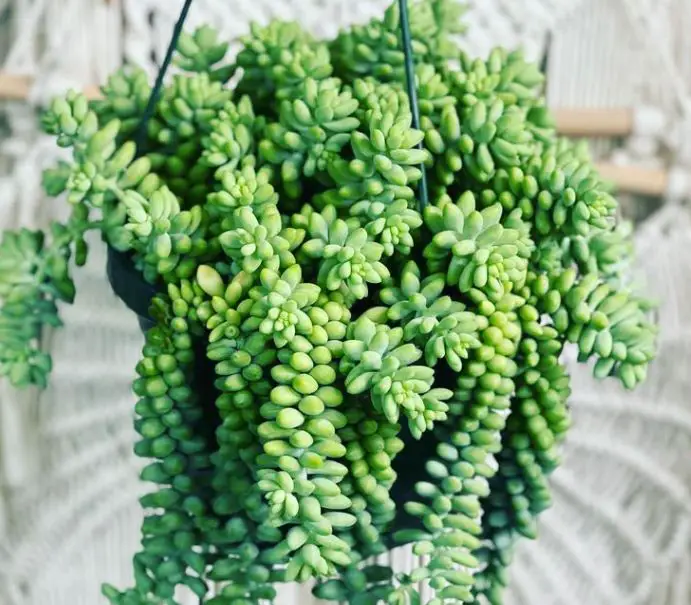
Burro’s tail care requirements
Like most succulents, a burro’s tail is easy to grow and maintain as long as you stick to a few rules. You don’t need to water it often as long as you have grown it in a place with bright indirect sunlight. However, it’s extremely fragile and the stems can easily break off when mishandled.
The following are important care requirements for growing the burro’s tail succulent.
Soil type
Borro’s tail thrives well when grown in well-draining soil. Therefore, use succulent or cactus mix when potting or repotting. You can also add some perlite or pumice to a standard potting soil and use it to grow the succulent. Ensure the soil has a neutral to alkaline pH.
Further, use a pot with drainage holes when growing the donkey’s tail plant. This will allow excess water in the soil to escape. Donkey’s tail cactus can easily die due to root rot and other fungal infections when grown in soil that retains water.
Light
The burro’s tail plant prefers full sun although it can tolerate partial shade. When growing it indoors, place it near a south-facing window to get maximum sunlight. You can also use artificial grow light if your location is not receiving enough sunlight.
Insufficient lighting can cause etiolation and stunted growth. As the plant struggles to get light, it will grow long and thin. The plant can also turn yellow and die especially when it’s not receiving sufficient light for photosynthesis.
Watering
Watering succulents is a delicate balance. Their stems and leaves can store water for a long period of time and there is no need for watering too often. Overwatering a burro’s tail can cause root rot and other fungal conditions. Excess water in the soil limits the air supply around the roots causing them to suffocate and die.
A good rule of thumb is to water your succulents when the soil is completely dry. Insert your finger in the soil to check for moisture level. If the soil is dry, water the plant heavily. Cut off watering during fall and winter when the plants are dormant.
Temperature
Burro’s tail succulent prefers warm temperatures although it can still do well in cooler weather. Maintain the temperature between 65 and 75 degrees Fahrenheit. This plant is not cold hardy and it can die when temperatures drop below 40 degrees Fahrenheit.
So, move it indoors when winter sets in and keep it away from drafty windows. The plant can be moved outside in the spring when temperatures are consistently above 40 degrees Fahrenheit. Be sure to gradually acclimate the plant to the brighter outdoor conditions to prevent sunburn.
Humidity
As with most succulents, Sedum morganianum prefers average levels of humidity. Keep your indoor humidity to around 40-50% and your succulent will enjoy it. High humidity levels can cause stem rot, powdery mildew, and other fungal problems to the plant.
Fertilizing
The donkey’s tail succulent isn’t a heavy feeder but you can stimulate growth with a monthly application of a well-balanced houseplant fertilizer during spring and summer. Dilute the fertilizer to half-strength or as directed on the label and don’t overfertilize.
Repotting
Burro’s tail plants may outgrow their pots and there is a need to repot after every 3 to 4 years. You’ll need to be careful when transplanting this succulent thanks to its fragile stems. When repotting, use succulent soil and a pot with drainage holes at the bottom.
If you prefer planting succulents in containers without drainage holes then you’ll need to create a drainage layer. Some rocky pebbles at the bottom of the pot can help excess water escape from the soil. You’ll still need to use a well-draining soil mix.
Pruning
Pruning the burro’s tail is not recommended unless you want to get some stems for propagating the plant. However, if you feel that your plant is growing out of proportion, you may trim off a few overgrowing branches to keep the succulent in shape.
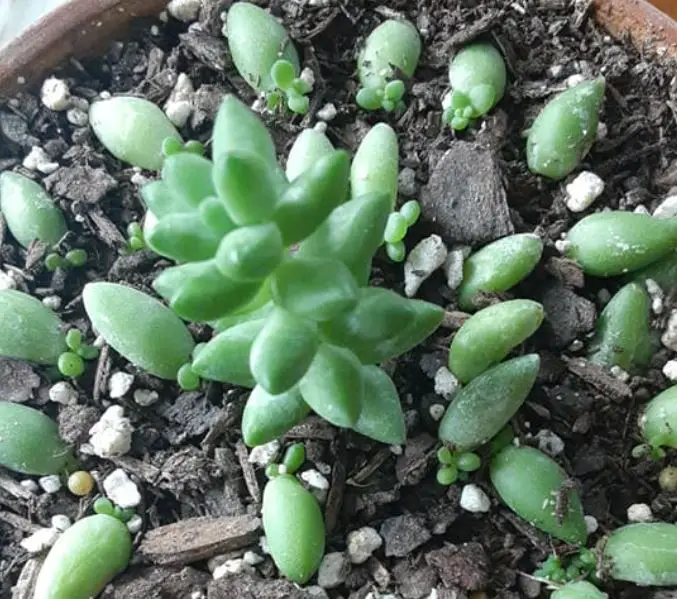
How to propagate burro’s tail plant
If you are growing burro’s tail indoors, you’ll notice that it rarely flowers. Therefore propagating it by seed can be a tall order. You’ll need to source viable seeds and prepare adequately for them to germinate. This makes propagating the burro’s tail by stem cuttings or leaves the best option.
The best time to propagate the burro’s tail plant is during the spring to early summer. This is when succulents are actively growing and the conditions will be favorable for proper rooting and growth of the stem cuttings or leaves.
Here’s how to propagate the donkey’s tail plant by stem cuttings or leaves.
- Choose a healthy burro’s tail stem or leaves.
- Obtain a few leaves or stems from the plant using any clean-cutting tool.
- Place the leaves or stems in a warm place for 2-3 days so they can callus over. This will help to prevent rot and other fungal infections.
- Plant the leaves or stems in a pot filled with a well-draining potting mix, preferably caucus or succulent mix.
- Spray the soil lightly but don’t overwater.
- Place the pot in a place that receives bright, indirect light.
- Water the plant and water when the soil is dry to the touch.
- The leaves or stems will take 3 to 4 weeks to root, so be patient.
You can also propagate burro’s tail succulent in water. Simply place the leaves or stem cuttings in a jar of water and place it in a bright, indirect light location. The leaves or stems should root in a few weeks and you can transplant them into individual pots.
Common problems with donkey’s tail plants
Burro’s tail succulents are not very susceptible to pests and diseases, but neglected plants can be affected by mealybugs, scale, and spider mites. Conduct regular inspections and if you see any pests, treat them immediately with insecticidal soap or neem oil.
This succulent is also prone to root rot when overwatered or when grown in soil that retains excess water. The condition may cause the stems to turn soft and collapse. If you suspect that your donkey’s tail plant has root rot, remove it from the soil and repot it in fresh succulent soil.
The leaves and stems of the burro’s tail plant are very fragile. When relocating or repotting, handle them carefully to prevent them from falling off.
Final thought
Burro’s tails are beautiful low-maintenance plants. They need full sun or bright, indirect light and well-draining soil. Water them when the soil is dry to the touch. Inspect them regularly for pests and treat them as needed. If you need more plants, just get a few leaves or stem cuttings and root them in water or a recommended succulent potting mix.
My name is Diane M Lewik, and I am the founder of this website. I am a degree holder in plant biology from the University of California – Berkeley. Over years, I have cultivated a vast collection of succulents and I have learned a great deal about how to grow and care for these unique plants.
